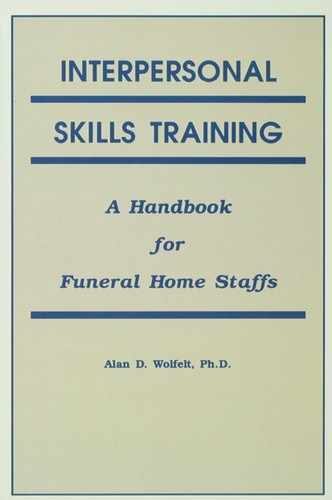SKILL FIVE: LEADING
a. Leading is anticipating where the person is going and responding with an appropriately encouraging remark.
b. Leading is the helping funeral director’s impact on, or thinking ahead of, the person.
c. It is you slightly anticipating the person’s direction of thought as a method of stimulating talk.
2. IDENTIFY PURPOSES FOR USING THE SKILL
a. To encourage the exploration of thoughts and feelings and to expand on the thoughts and feelings already discussed.
b. To allow the person freedom to explore in a variety of directions and to respond freely to what is occurring.
c. To encourage the person to actively retain a portion of the responsibility for direction of the interaction. In a sense, you are actually following his or her lead, while providing a sense of direction based on the content of what is expressed to you.
3. ENHANCE UNDERSTANDING OF LEADING
The skill of leading gives the person permission to “tell his or her story” or expand on what has been said. As you know, people will often have a need to explore events prior to the death of the person who has died. This process is healing and is encouraged by the effective use of leading.
Two different kinds of leading exist—indirect and direct. Let’s take a moment to distinguish between the two.
Indirect leading often helps get the person started talking about whatever is important to him or her. Indirect leading is general in nature and allows the person to explore his or her own ideas and sense of direction.
Direct leading is where you focus the area to be discussed more specifically. This allows the person to expand on some important area that has been brought into the discussion. The illustrations that follow will clarify the distinctions between these two forms of leading.
Some people with whom you interact in a funeral director helping role will find that leading is encouraging. They will experience more responsibility for the content of what is being discussed. Other people find leading more threatening; they want you to do most of the talking, advising, and questioning. You can follow their leads as to how active a role to play in the discussions.
You must be careful, however, not to assume that they want to play a very minimal role. Many people become naturally passive as a part of the initial phases of the experience of grief. With supportive encouragement and the opportunity to become active, these very people are often capable of becoming an important part of discussions and the decision-making process.
4. ILLUSTRATE THE USE OF INDIRECT LEADING
“What else can you think of that might be helpful to talk about?” (Such statement allows the person to go in whatever direction he or she wishes.)
“Are there any questions you have of me before we get started?” (This statement allows the person to pose questions of most importance to him or her.)
Pausing and looking expectantly at the person can often serve as an indirect lead. (Your nonverbal message tells the person that you are willing to talk about whatever he or she wants.)
5. ILLUSTRATE THE USE OF DIRECT LEADING
(Again, remember that direct leading differs from indirect leading in that it helps focus the topic more specifically.)
“Could you tell me more about your mother’s illness?” (This statement allows the person to teach you more about the nature of his or her mother’s illness.)
“It sounds like the music is one of the most important parts of the service to you. Can you help me understand more about what kind of music you want?” (This statement encourages the person to expand on the music.)
“You mentioned that the holidays are the most difficult for you. Can you help me understand that?” (Such statements allow the person to tell you more about why the holidays are the most difficult for him or her.)
a. The person whom you are helping experiences a sense of sharing the responsibility for the interaction.
b. The person is allowed to determine where he or she needs to go.
c. Leading frees you from feeling “over-responsible” for the total direction of the interaction.
Trainer will do any additional role-play modeling to enhance the ease of learning for participants.
GROUP REHEARSAL WITH TRAINER LEADING
Directions
The trainer will talk to the group about any topic. The task is for everyone to listen and when a natural break occurs anyone can offer a leading statement. Indirect leads will be concentrated on initially, then direct leads.
Expectations
This will allow everyone to practice in the group setting in a non-threatening environment. The trainer will provide immediate feedback on the leading and make any suggestions for improvement. This activity also allows participants to observe that often more than one way is appropriate for leading. Participants will be encouraged to ask follow-up questions and clarify any misunderstanding related to this skill.
TRIAD BREAK-OUT REHEARSAL LEADING
Directions
Work in triads. One person (speaker) should talk freely for five minutes about any topic of interest. The second person (helper-listener) to whom he is speaking will concentrate on using the skill of leading. Indirect leads can be practical initially, then direct leads. The third person (observer) will be available to provide follow-up feedback on the appropriateness of the leading statements.
Each member of the triad will rotate through each of the three roles: speaker, helper-listener, and observer. The trainer will circulate throughout the room and be available for questions and concerns.
Expectations
Again, this will provide immediate feedback as participants work to develop this skill.
8. SUMMARIZE AND LIST GUIDELINES FOR THE SKILL
9. NOTES OR QUESTIONS YOU HAVE FOR THE TRAINER RELATED TO THE SKILL
